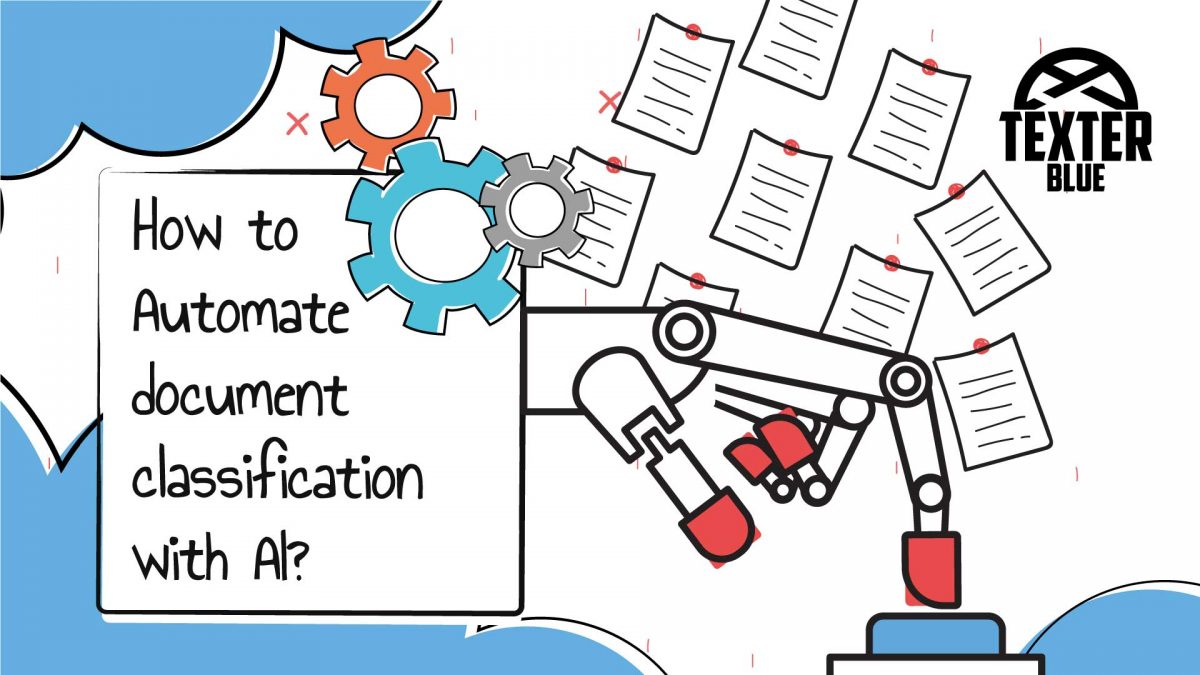When processing diverse types of documents, it’s important to have a way to classify them in their respective types. By having everything properly classified, you can improve your workflow, by directing the specific documents to the right team-members for process, or for your AI to extract data.
There are two methods of document classification: of course, Manual classification; and Automated classification (powered by AI).
Even though smaller organizations are used to employ the manual process, which isn’t done without fail. It’s a time-consuming process and very prone to human error.
So, to optimize the entire process, automated classification with AI is the best option to take. And how can you do that? Well, let’s see…
What is automated document classification?
In an automated process, documents are fed into a system, powered by AI models, where they can be automatically identified, classified, sorted, and processed. There are various advantages to this method, such as:
- Documents can be scanned into the system without pre-sorting.
- After classification, they can be automatically sent to the respective department without the need for human input.
- Input errors can be found by the system, which could otherwise be missed with manual sorting.
How does an automated document classification workflow work?
The automated document classification can be divided in three steps:
1) File format identification – Organization deal with various file formats, so it is imperative that the first step be the identification of the file format being worked on.
2) Identifying the structure – There can be various structures of documents available, such as:
- Structured documents – These are the type of documents that follow a specific template (tax forms, government documents, etc.).
- Semi-structured documents – This type of documents are the ones that have fixed values (name, address, date, etc.), but lack a specific template. Invoices are a good example of this type of documents.
- Unstructured documents – This type of documents doesn’t have a specific structure and no fixed values. They consist mostly of text, where specific data might have to be extracted from various paragraphs. A good example would be contracts.
3) Identifying the type of document – This is the last step, where documents are finally classified.
Your AI might use two different methods to classify the document. Either through a visual approach or through a text approach.
The visual method works best with structured documents, since the AI already knows where to read specific information, and, by identifying that information, a pattern is found that when compared with others, lets the AI know the document type.
The text method, reads the whole text and classifies it and with that information, classifies the document type.
What Types of document classification there are?
There are three methods of document classification:
- Unsupervised – Words, sentences and phrases are grouped. Then the grouped sets are used to classify the document.
- Supervised – A set of tags and rules need to be set by the user for each type of document. While processing, if any of those tags are detected and then matched with other tags, the document is classified according to the rules set by the user.
- Rule based – This method is like the previous one, but instead of tags related to text field, instead, patterns and linguistic rules are used to scan the document and classify it accordingly.
What are the benefits of automatic document classification?
The evolution in AI and Machine Learning has made automated document classification a must have.
One of the big advantages is that AI can adjust to the changes in documents in a much faster way that employees would be able to, in turn, saving time to the organization and to their employees.
It also helps with security against data breaches. The less people that the document passes through, the best, so that classified information is always kept secure, while keeping in accordance with privacy laws.
TML – Texter Machine Learning: AI is essential to remain relevant!
The adoption of AI in modern organizations is essential to remain relevant and competitive, optimizing efficiency, empowering new business opportunities, and freeing critical human resources to specific value-added tasks.
Download here our TML – Texter Machine Learning – Datasheet, and contact us:
By submitting you confirm that you have read and agreed with our Privacy Policy.
If you liked this article, please check news section. Don’t miss it out, and if you’re struggling with your digital transformation, remember… you are not alone in this… Texter Blue is here to help you providing the best results! Make sure you read our news and articles and contact us.

